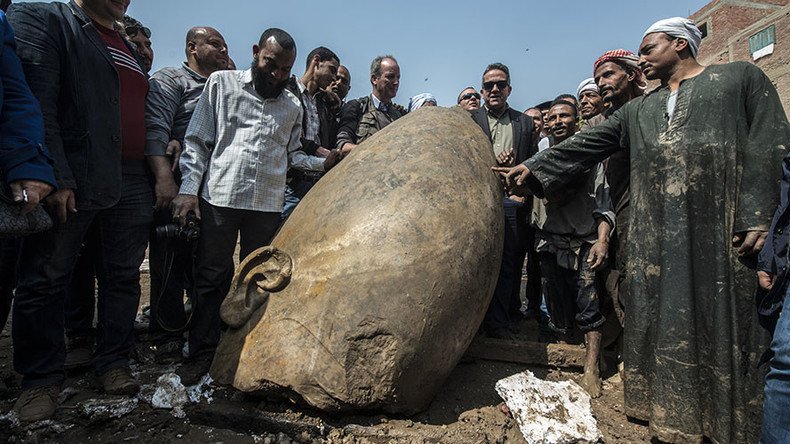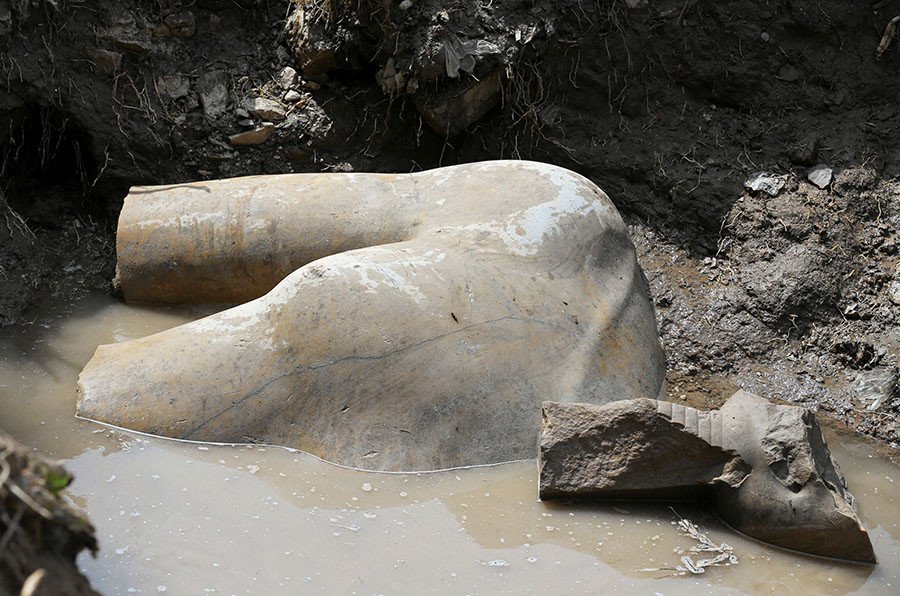Ancient Egyptian statue discovered in Cairo wasteland (PHOTOS, VIDEO)

Remains of an ancient Egyptian statue believed to depict Pharaoh Ramses II have been found hidden in an area of flooded wasteland in Cairo.
The statue’s head and broken torso were recovered from a pit of earth and water by a team of German and Egyptian archaeologists in Cairo’s Matareya district on Thursday, reports Almasry Alyoum.
READ MORE: Archaeologists discover ancient Egyptian city close to Pharaoh’s tomb
Modern day Matareya is where the ancient Egyptian city of Heliopolis once stood and archaeologists suspect the newly discovered eight-meter-tall effigy could be a tribute to a pharaoh who ruled Egypt between 1279-1213 BCE.
Although no markings specifically identifying Pharaoh Ramses II exist on the artifacts, the fact they were found near Ramses Gate suggests it might be a statue in his honor.
Dr Dietrich Raue, University of Leipzig professor and the German team lead, told RT that the area in Matareya had been under investigation since 2001. “The statue was found in one of the last squares that had not been excavated yet,” he said.
He added that it was likely to have been erected at a temple in Heliopolis around 1250 BCE: “Ramses II often used statues of earlier kings, so when the statue is taken out, research will start to prove, whether it is reused or not.”
Victory at the Battle of Kadesh, in which Egyptian forces outmaneuvered their Anatolian enemies, has been attributed to Pharaoh Rameses II, who is often depicted riding a chariot in ancient artwork.
The Egyptian king is also thought to have had 200 wives during his reign.
Pictures from the excavation site show how pieces of stone sculpture were found hidden underneath soil in a squalid area of Matareya.
According to the head of the Egyptian archaeological team, Dr Ayman Al-Ashmawy, the giant sculpture will be assessed by researchers while work to discover if any further materials are buried at the location continues.

Once more research into its origins is carried out, the statue is expected to be placed in a new ultra-modern Grand Egyptian Museum, currently planned for a site near the Giza pyramids.
READ MORE: Spectacular 3,800yo boat carvings found beside Egyptian pharaoh's tomb (PHOTOS)
Tarek El Awady, director general of the museum, described the discovery as “beautiful”.
“It is a very beautiful colossal statue… and such a large object shows how great this ancient capital of Egypt was,” El Awady told Deutschlandradio Kultur.












